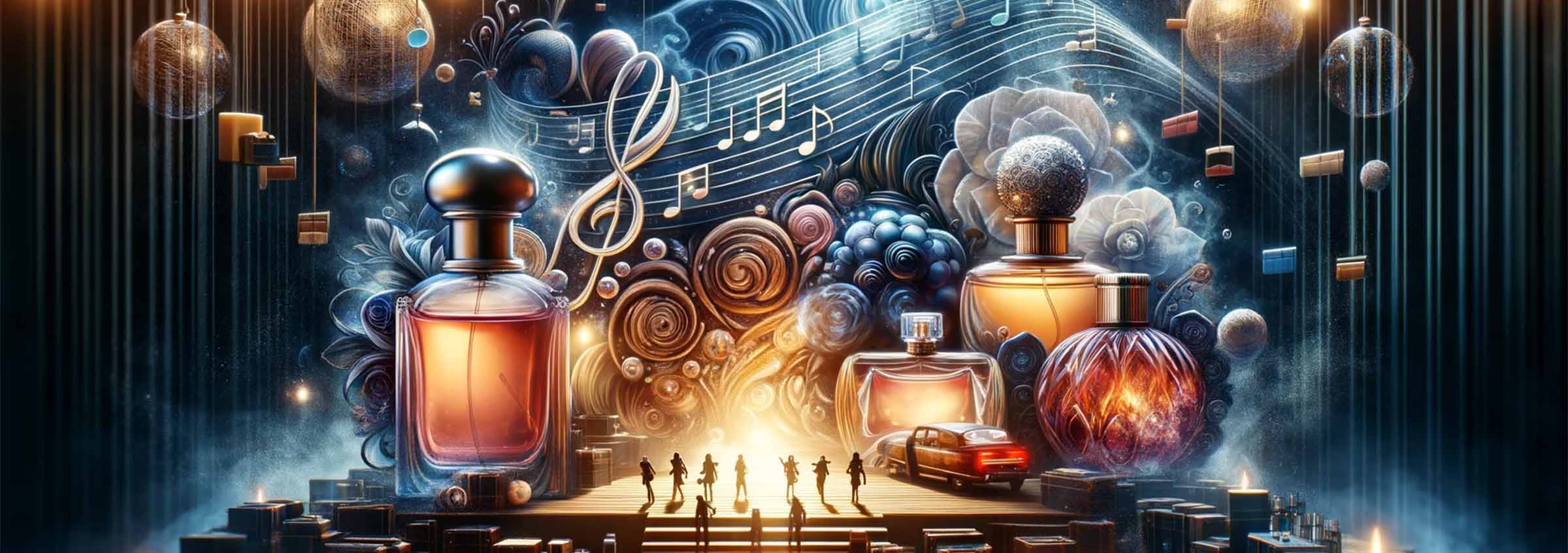Introduction
Perfume is more than just a scent; it's an expression of personal style and cultural identity. Our guide takes you on a journey through the rich history of perfume, from ancient rituals to modern fragrance creations. Learn about the art of perfume making, the complexity of scent notes, and how perfume has evolved over the centuries. In addition to insights into history and trends, this guide offers practical tips for choosing the perfect perfume for any occasion. Enriched with AI-generated images, this guide is an essential resource for anyone interested in the unique world of perfumes.
Find the Perfect Perfume
Determine your scent preferences
Discover which fragrance families appeal to you the most. These could be floral, woody, fresh, or oriental scents.
Reflect on the scents you find attractive in your daily life, such as the air after rain (fresh) or freshly ground coffee beans (rich and intense).
Consider occasion and season
Opt for lighter, subtler scents for daytime or during spring and summer. These fragrances are often fresher or fruitier.
For evenings or colder months, heavier, more pronounced scents such as woody or oriental are more suitable.
Test on your skin and find warm spots
Try the perfume directly on your skin, preferably on your wrist. The interaction with your skin chemistry can influence the scent.
Apply the perfume to warm areas of the body for the best effect, such as behind the ears, on the wrists, in the neck, or on the inside of the elbows.
Give the scent time to develop. Smell it after a few minutes for the first impression and again after an hour to assess the long-lasting 'heart note' of the fragrance.
Pay attention to concentration and budget
Choose between Eau de Cologne, Eau de Toilette, Eau de Parfum or Extrait de Parfum depending on your preference for scent strength and longevity.
Determine your budget in advance. There are good options in every price range, so don't be guided solely by price.
Reflect your personality
Select a perfume that matches your personal style and character. Whether you are energetic, understated, adventurous, or classic, let your fragrance be an extension of who you are.
Don't be afraid to deviate from your usual preferences occasionally and try something new. Sometimes you might discover a scent that surprisingly suits you well.

Learn More
From here, we delve deeper into the rich history, the fascinating manufacturing process, and the complexity of scent notes. This guide offers an in-depth exploration of everything related to perfume, from its historical roots to the subtle art of creating enchanting fragrances. Whether you are a perfume enthusiast or new to this world, you will undoubtedly enrich your knowledge and appreciation for perfume.
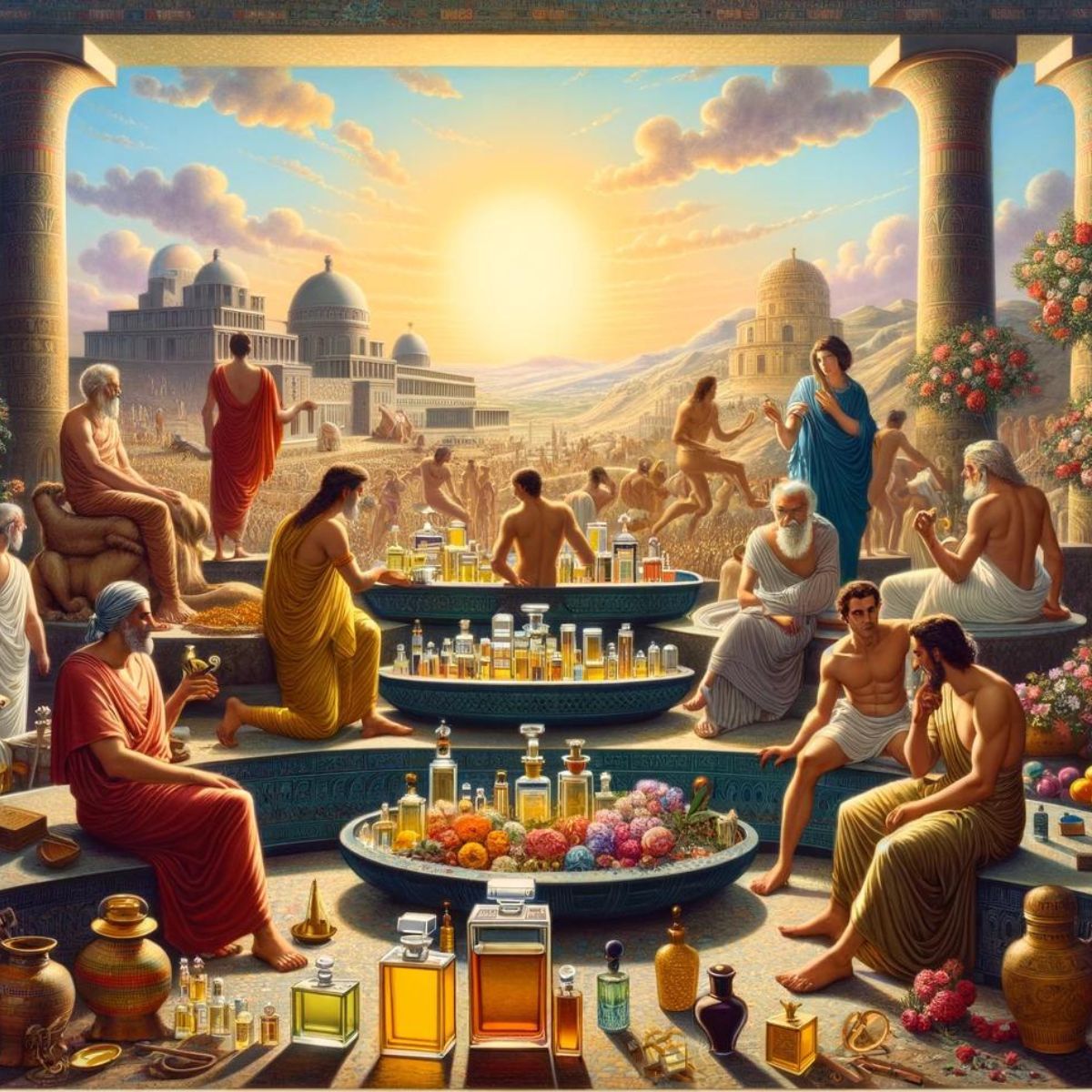
The history
Perfume is an ancient art that dates back to the oldest civilizations. The journey begins in ancient Egypt, where perfume not only played a role in personal beautification, but was also invaluable in religious ceremonies and rituals. These fragrant substances were used in the embalming of bodies and as offerings to the gods, giving them deep spiritual significance.
In classical Greece and Rome, the meaning of perfume took a turn towards the mundane. Here it became a symbol of status and wealth. Bathhouses and physical care were inextricably linked to fragrant oils and balms, which were used by both men and women. Perfume became a sign of refinement and elegance, and a way to distinguish oneself in the upper echelons of society.
During the Middle Ages, the flourishing trade with the East opened new horizons for the perfume industry in Europe. Traders brought with them a wealth of new ingredients, such as spices, resins and exotic flowers, which revolutionized the art of perfumery. This period saw a refinement in the techniques of extracting and preserving scents, leading to an increase in the variety and complexity of perfumes.
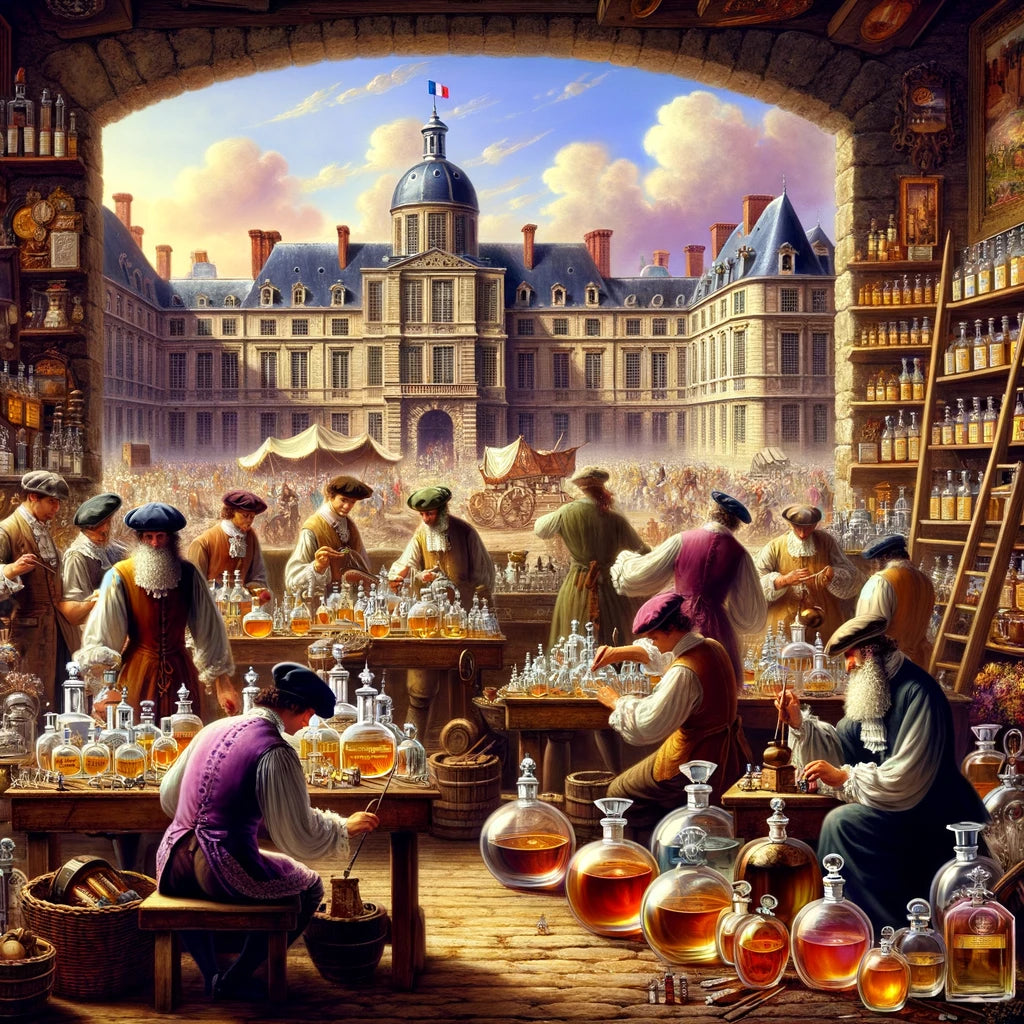
France gradually took the lead in the perfume industry. In the 17th and 18th centuries, under the patronage of the French nobility, especially the court of Louis XIV, perfume production reached a level of artistry and craftsmanship that was unparalleled. The city of Grasse in southern France became the global center of perfume production, known for its excellent quality of natural ingredients and expert perfumers. To this day, France remains synonymous with high-quality perfumes, a heritage proudly continued by generations of perfumers.
This rich history reflects not only the evolution of perfume as a product, but also the changing cultural, social and economic landscapes within which perfume was made and valued. From sacred rituals to signs of social status, perfume's role in human history is as varied as the scents themselves.

The manufacturing process
The art of perfume making is an intricate and painstaking process that requires both scientific precision and creative flair. It starts with the selection and extraction of fragrances, a process that requires in-depth knowledge of fragrant raw materials. Natural ingredients such as flowers, leaves, herbs, woods and even resins are carefully selected for their unique fragrance profiles. These natural essences are often obtained through methods such as steam distillation, cold pressing, or enfleurage, a traditional technique in which fragrance is absorbed into fats or oils.
In addition to natural extracts, there is also an extensive world of synthetic fragrances. In modern laboratories, chemists create new fragrance molecules that can mimic unique scents or create completely new olfactory experiences. These synthetic fragrances offer greater consistency and a broader palette of scents that sometimes cannot be obtained from nature.
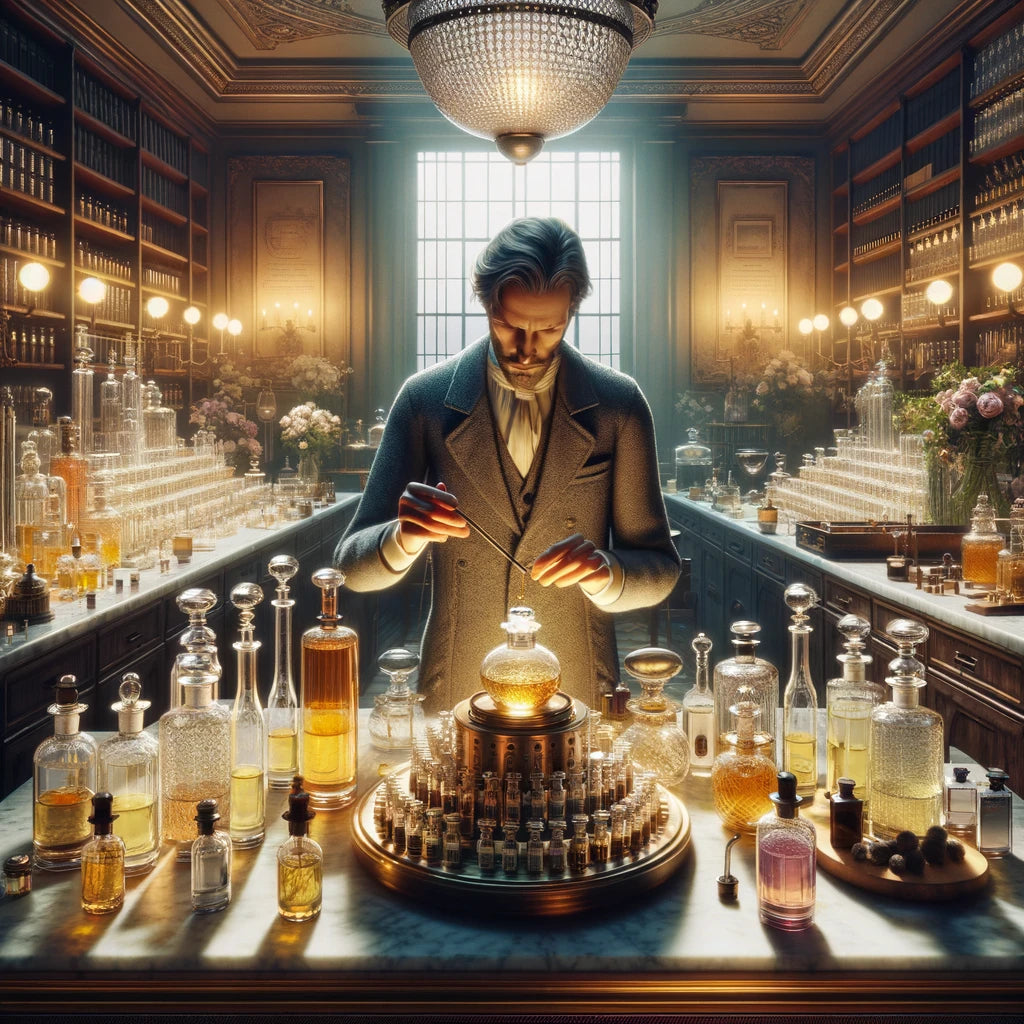
The mixing process
Once the essences have been collected, the process of blending the scents begins. This is where the art of the perfumer, or 'nose', takes center stage. Mixing different scents requires an extremely detailed understanding of how different notes come together to form a harmonious and attractive scent. Perfumes are usually composed of top notes (the first impression), heart notes (the core of the scent) and base notes (the last and most lasting impression). The balance between these notes is crucial for the final fragrance profile.
Alcohol is often the carrier of choice for these fragrant mixtures, due to its ability to disperse and preserve the scent well. The concentration of the fragrance oil in the alcohol determines the strength and longevity of the perfume - the higher the concentration, the more intense and long-lasting the scent.
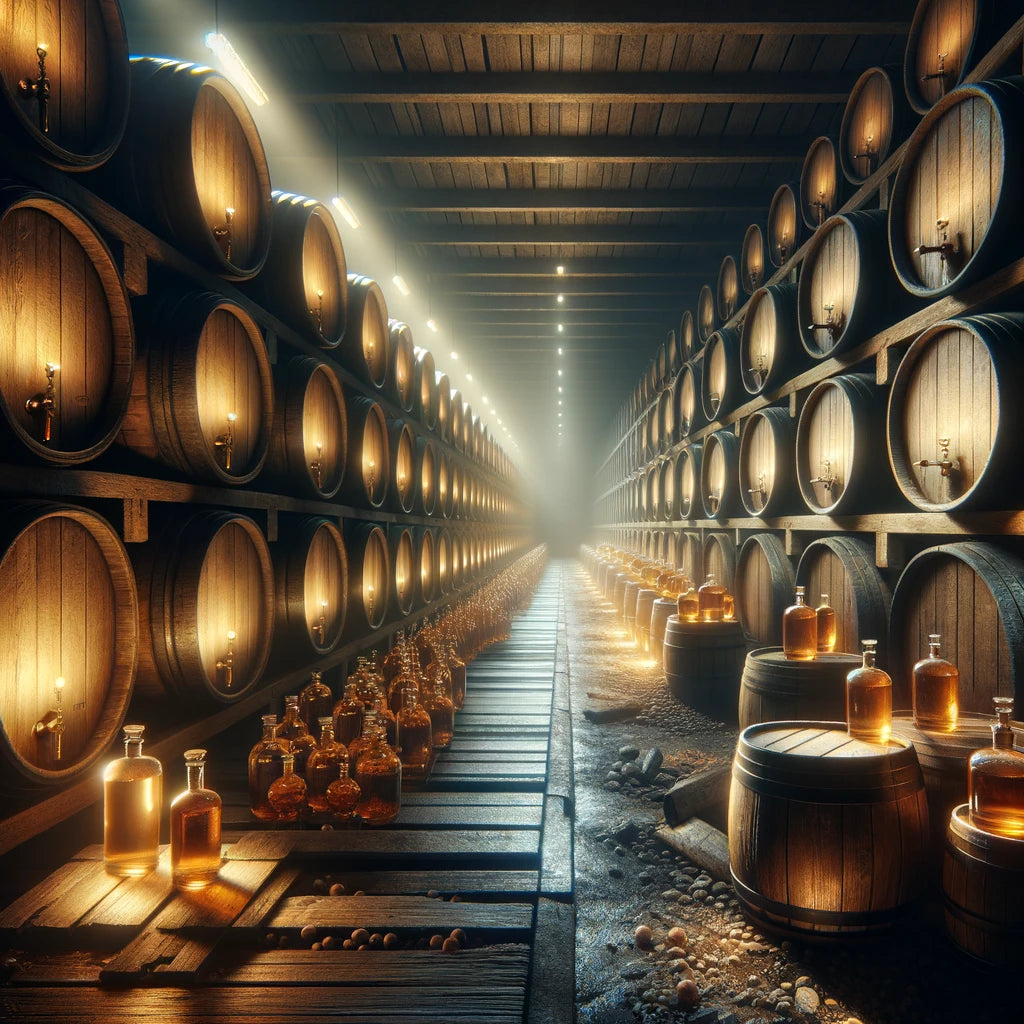
The ripening process
After mixing, the perfumes undergo a maturing process, similar to that of wine or cheese. This maturation process can vary from several weeks to months and is essential for developing the full depth and complexity of the fragrance. Finally, the perfume is filtered to remove impurities and then bottled in carefully designed bottles that not only protect the fragrance but also serve as a visual representation of the perfume.
From ingredient selection to blending and maturation, every stage of the perfume-making process is infused with both science and art, resulting in scent creations that can stir emotions and create memories.
The different scent notes
Fragrance notes are the essence of every perfume creation, functioning as the individual melodies that together create a harmonious symphony of scents. They are divided into three primary categories: top notes, middle notes (or heart notes), and base notes, each with a unique role in the overall fragrance experience.
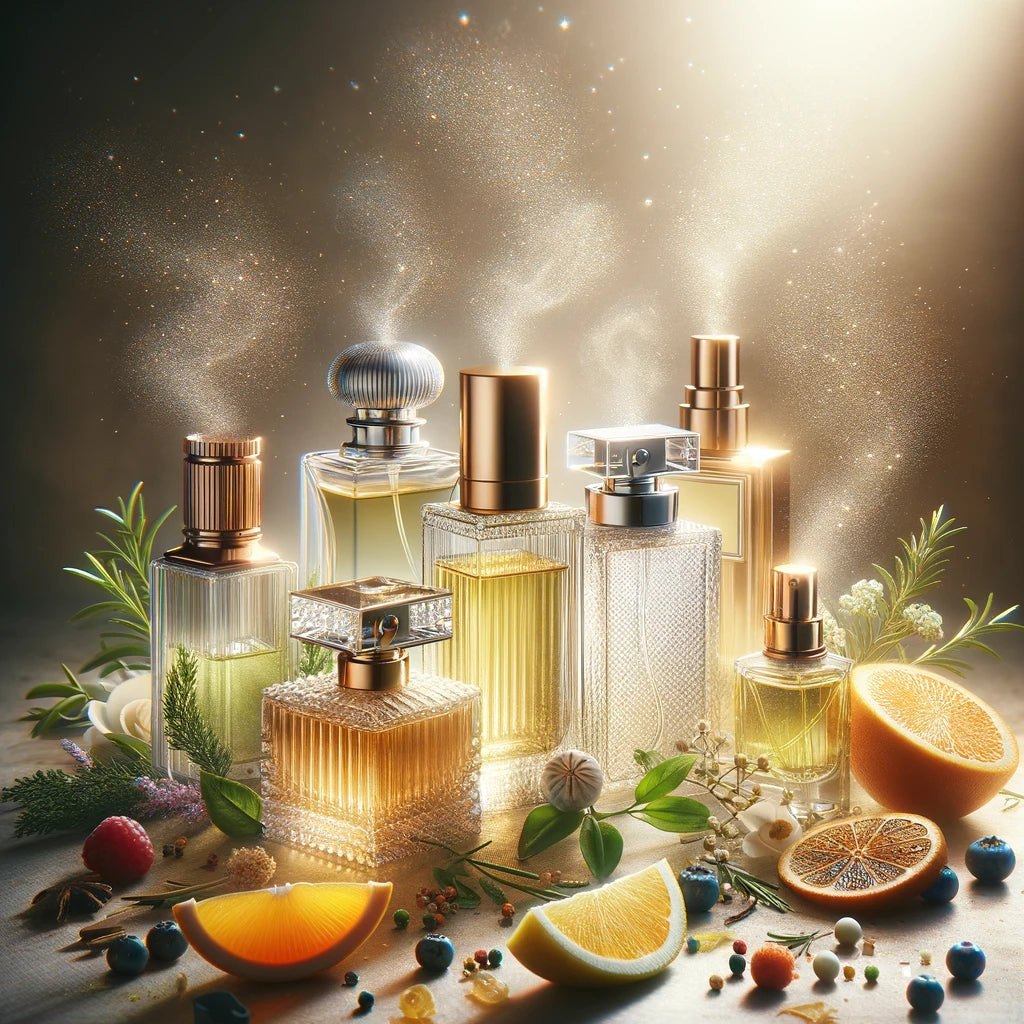
Top notes
Top notes are the first scents you smell when applying a perfume. They are usually light, fresh and ephemeral, and designed to make an immediate impression. They often consist of citrusy, spicy or fruity scents. Their volatile nature means they evaporate quickly, usually within 5 to 15 minutes, before giving way to the middle notes.
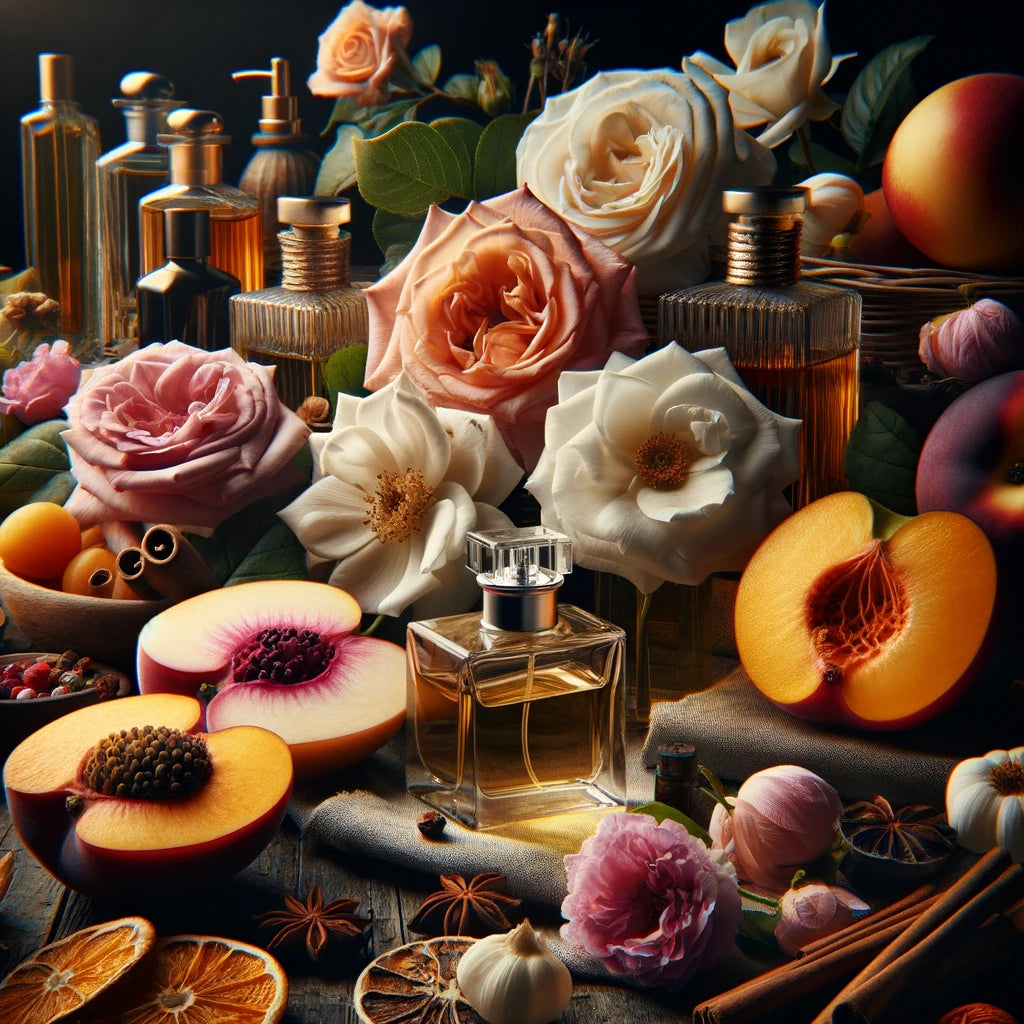
Middle notes
Middle notes, also known as the heart of the perfume, form the core of the fragrance. These notes develop after the top notes have faded and give the perfume its unique character. Heart notes are usually richer and fuller than top notes and last longer on the skin. Floral, fruity or spicy scents are common components of the middle notes, which can last for several hours on the skin.
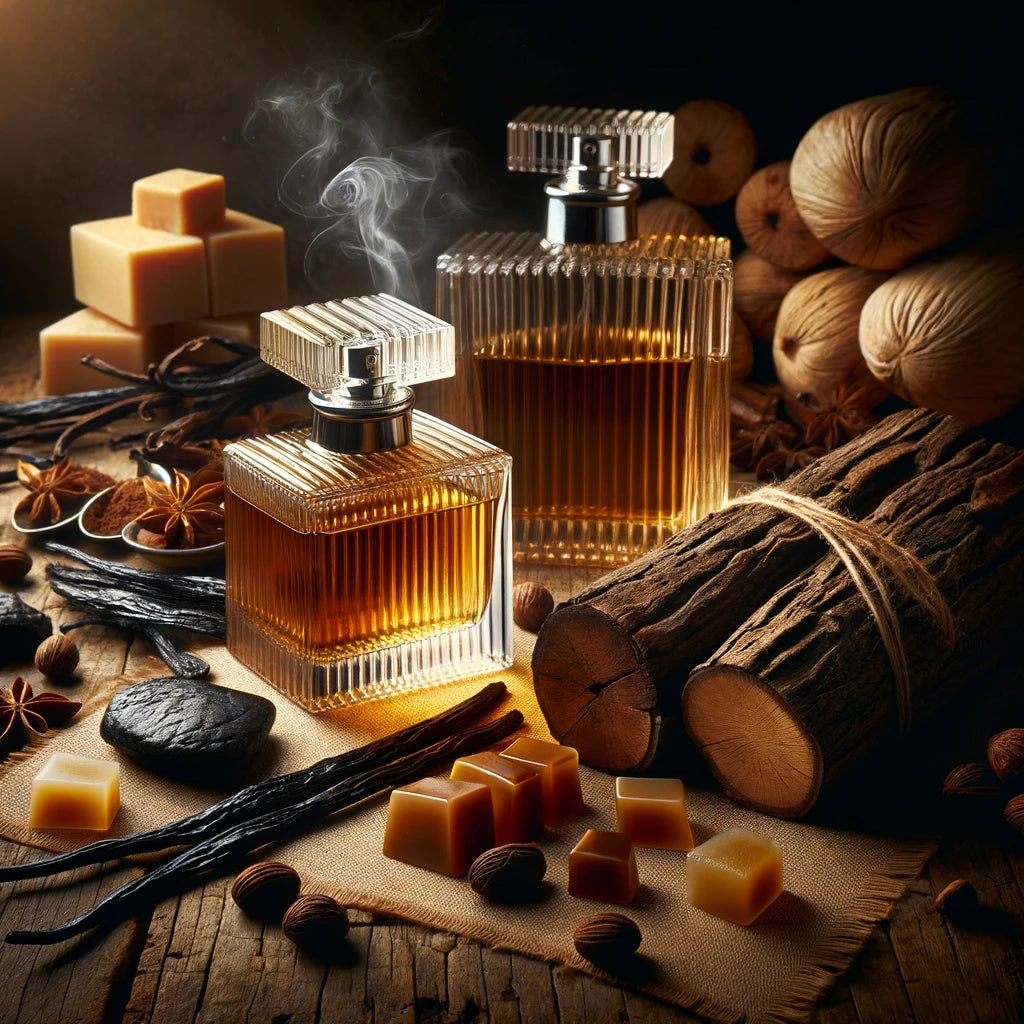
Base notes
Base notes are the last and most lasting scents in a perfume. These rich, deep notes develop and emerge after the heart notes fade. Base notes form the foundation of the perfume and give it its depth. They often consist of warm, woody or resinous scents and can last on the skin for up to 24 hours or longer. Ingredients such as musk, vanilla, amber and sandalwood are popular base notes.
The interaction between the top, middle and base notes determines the unique character and complexity of the perfume. This layering ensures that a perfume develops and changes over time, creating a dynamic and multiple scent experience. Understanding the interaction between these different notes is essential for perfumers, who use this knowledge to create balanced and captivating scents that leave a lasting impression.
So the science of fragrance notes is not just a matter of individual scents, but also of how these scents merge and evolve. This interplay of scents reflects the art and science behind each bottle of perfume, offering an infinite range of possibilities for creativity and expression in the world of perfumery.
Fragrance families
Fragrance families are crucial in the world of perfume, serving as a method for classifying and understanding the myriad of scents surrounding us. They provide an essential framework for both beginners and experts in perfumery by organizing perfumes into recognizable categories based on their dominant scent notes. This classification makes it easier to describe, compare, and select fragrances, similar to how music genres help us find songs that match our taste.
Understanding fragrance families allows you to navigate the world of perfumes more effectively, find fragrances that match your style and preferences, and develop a deeper appreciation for the art and science behind perfume creation. It all starts with choosing a fragrance family that appeals to you, and from there, experimenting with different scents within that category. This process not only aids in finding your perfect perfume but also enriches your fragrance collection and refines your scent palette, allowing you to discover a personal scent that reflects your personality and boosts your confidence.
Main Categories of Fragrance Families
There are generally four main fragrance families, each with their own subcategories that highlight further nuances and specific characteristics within the family.
This is by far the largest and most popular family, characterized by scents of a single flower (soliflore) or a combination of various flowers (bouquet). Floral fragrances can range from light and delicate to rich and complex.
This family includes scents that contain notes of wood and trees, such as cedar, sandalwood, and vetiver. Woody fragrances are known for their warm, earthy base that appeals to both men and women.
Fresh fragrances are lively and energetic, with notes of citrus, water, green leaves, and sea air. They are perfect for those looking for a light, invigorating scent.
Rich and sensual, oriental fragrances combine warm, sweet notes like vanilla, resin, and spices. This family is ideal for evening fragrances or for those who love deep, mysterious scents.
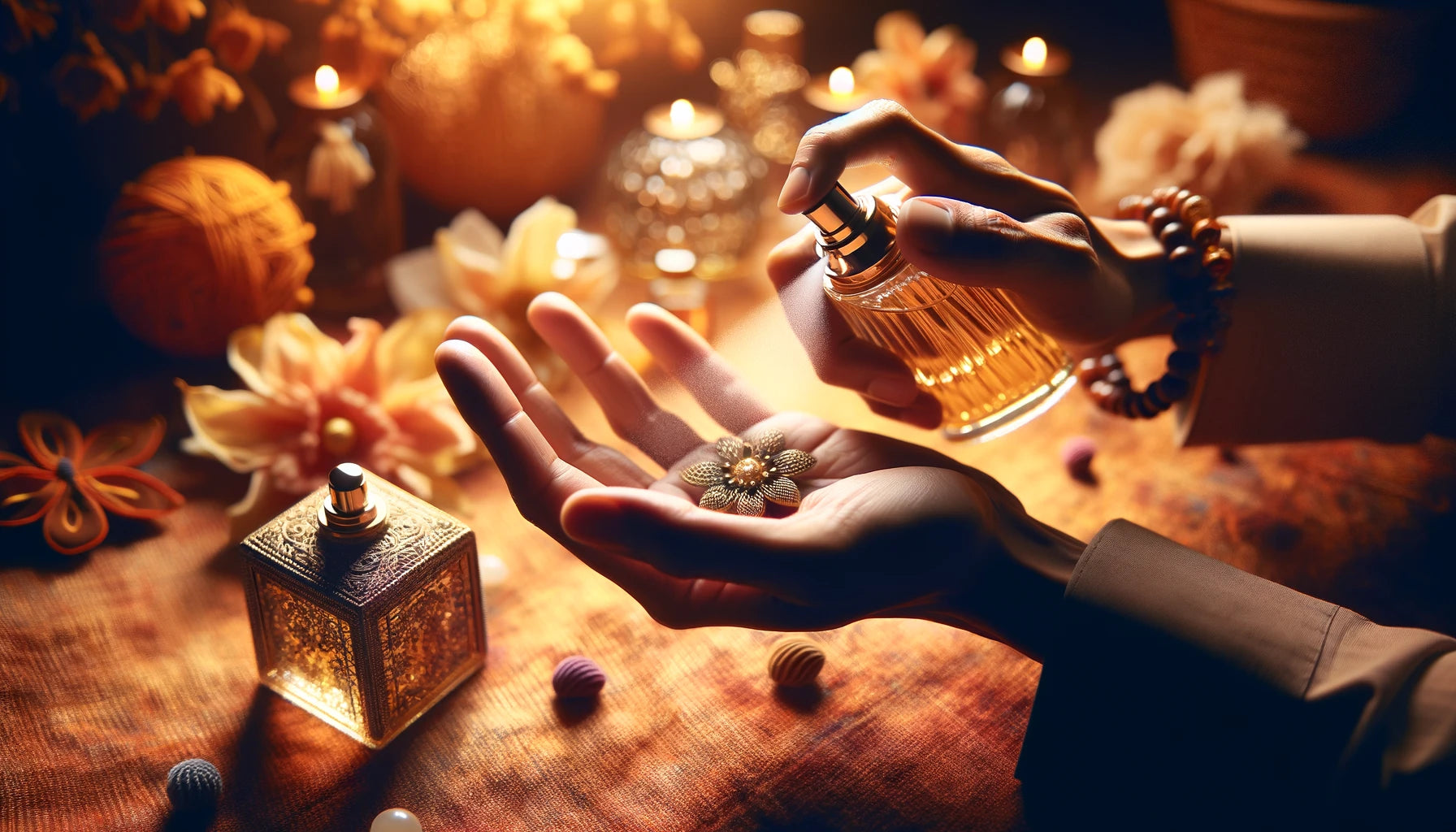
Structure and Development
The structure of a perfume can be aptly compared to a symphony in music, with each note carefully chosen and put together to form a harmonious whole. This composition of scents consists of different layers - the top, middle and base notes - that together create a unique scent experience. Just like a musical piece, where each note contributes to the overall melody, each fragrance note plays a role in shaping the perfume's characteristic identity.
When perfume is applied to the skin, it begins a fascinating transformation. The opening, characterized by the top notes, offers the first olfactory impressions, often fresh and inviting. As these notes fade, the middle notes emerge, the heart of the perfume that forms the core of the fragrance and often consists of richer, fuller notes. This gradual transition from one layer to another contributes to the dynamic nature of the perfume and makes each fragrance experience unique.
The final stage in the development of a perfume is the unveiling of the base notes, which form the foundation and depth of the fragrance. These long-lasting notes, often rich and deep, provide a lasting impression and stability to the perfume. It is this layered evolution of scents on the skin that determines the overall experience of a perfume, where the interaction and balance between the different notes are essential to create a harmonious and attractive whole. The art of perfumery therefore lies not only in the selection of the individual notes, but also in understanding how they develop and merge over time.
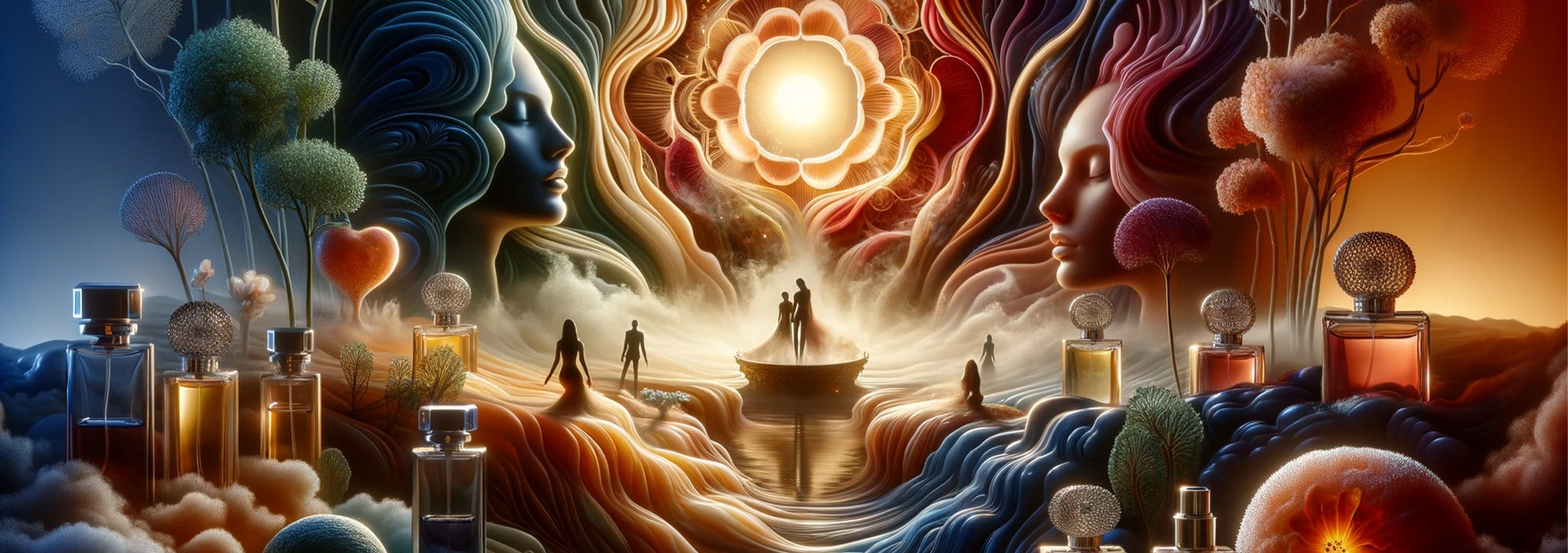
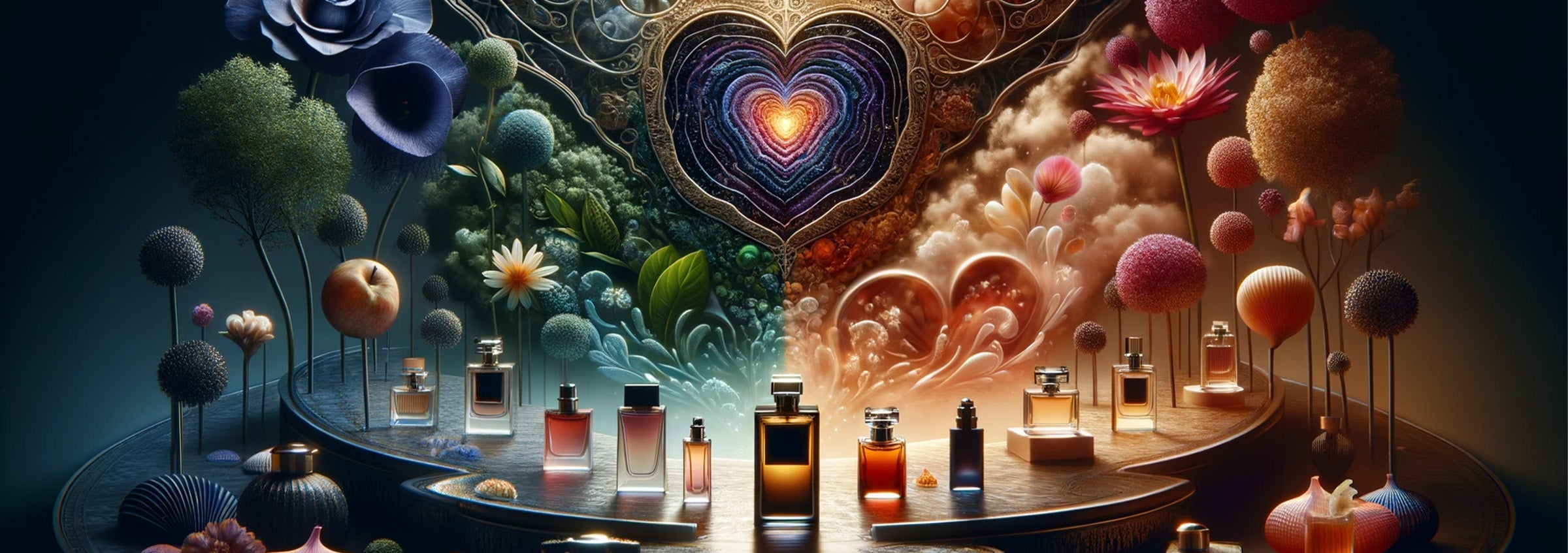
Different Types and Concentrations
Perfumes are fragrance creations that enrich our daily lives, ranging from light and subtle to rich and intense. Each type of perfume has a unique concentration, crucial for choosing a fragrance that suits one's personal style and occasion. In our exploration of the various types, the following concentrations will be outlined: Eau de Cologne, Eau de Toilette, Eau de Parfum, and Extrait de Parfum.
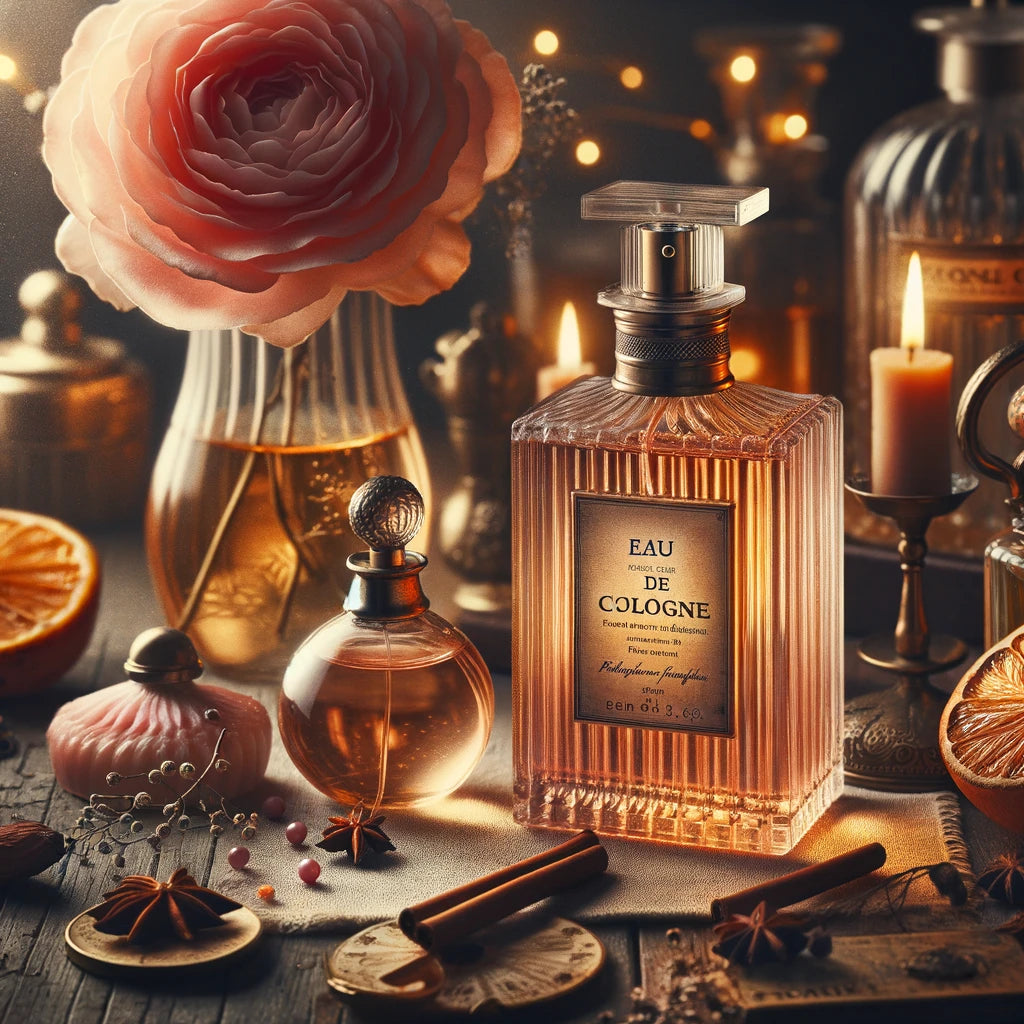
Eau de Cologne
Eau de Cologne, often abbreviated as cologne, is a type of perfume with a lower concentration of fragrances compared to other types of perfumes such as Eau de Parfum or Eau de Toilette. The concentration of fragrances in Eau de Cologne usually varies between 2% and 5%. This means that in a bottle of Eau de Cologne, 2% to 5% of the content consists of perfume oils, while the rest is mostly alcohol and water.
Due to this lower concentration, Eau de Cologne has a lighter, more subtle aroma and generally does not last as long on the skin as stronger perfumes. The scent of Eau de Cologne typically lingers for a few hours, depending on the specific formula and the user's skin type.
Eau de Cologne is popular because its light fragrance is not overpowering. It is also a good choice for people who are new to using perfumes or who prefer a subtle scent.
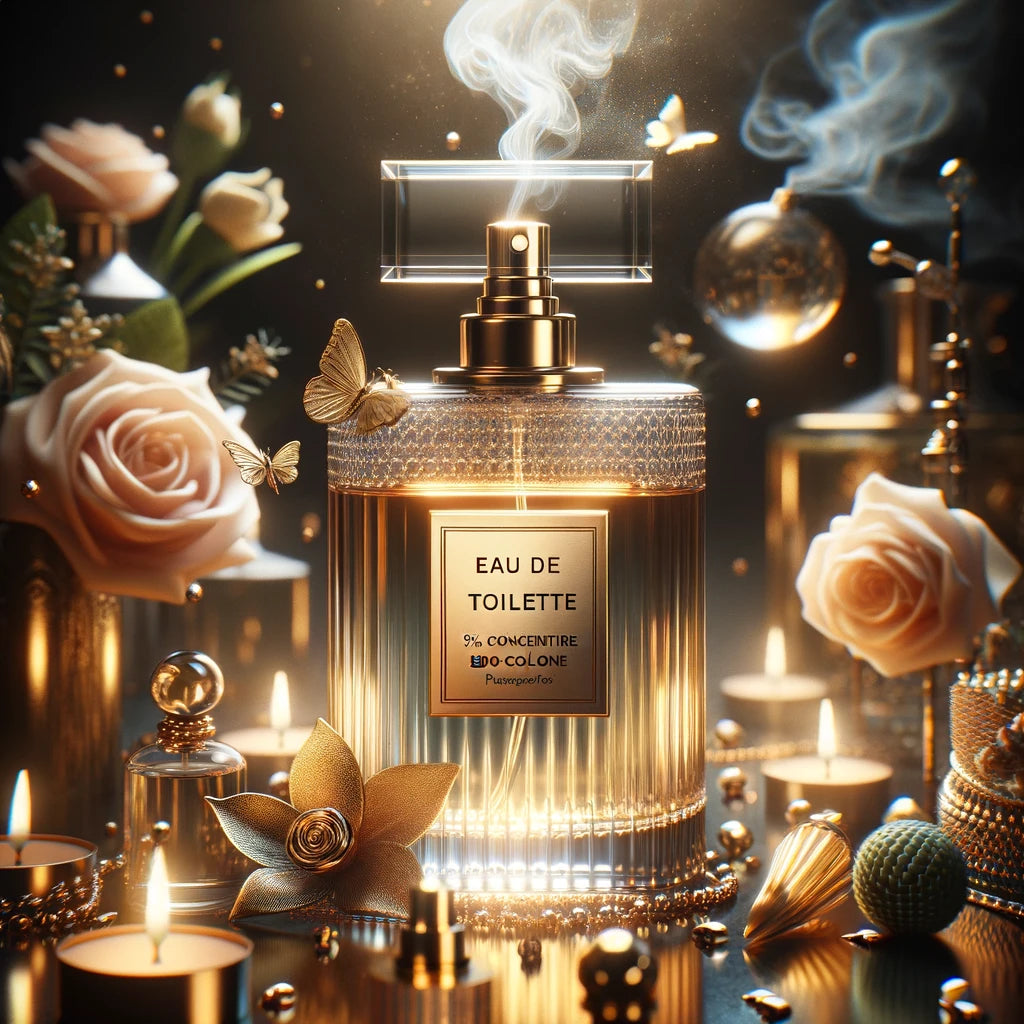
Eau de Toilette
Eau de Toilette is a type of perfume with a higher concentration of fragrances than Eau de Cologne but lower than Eau de Parfum. The concentration of fragrances in Eau de Toilette usually varies between 5% and 15%. This means that in a bottle of Eau de Toilette, 5% to 15% of the content consists of perfume oils, while the rest is primarily alcohol and water.
This moderate concentration ensures that Eau de Toilette has a noticeable but not overwhelming aroma. The scent often lingers on the skin for several hours, typically between 3 and 8 hours, depending on the formula and the user's skin type.
Eau de Toilette is often considered a good balance between subtlety and fragrance presence. Due to the lower concentration, Eau de Toilette is also often more affordable than Eau de Parfum.
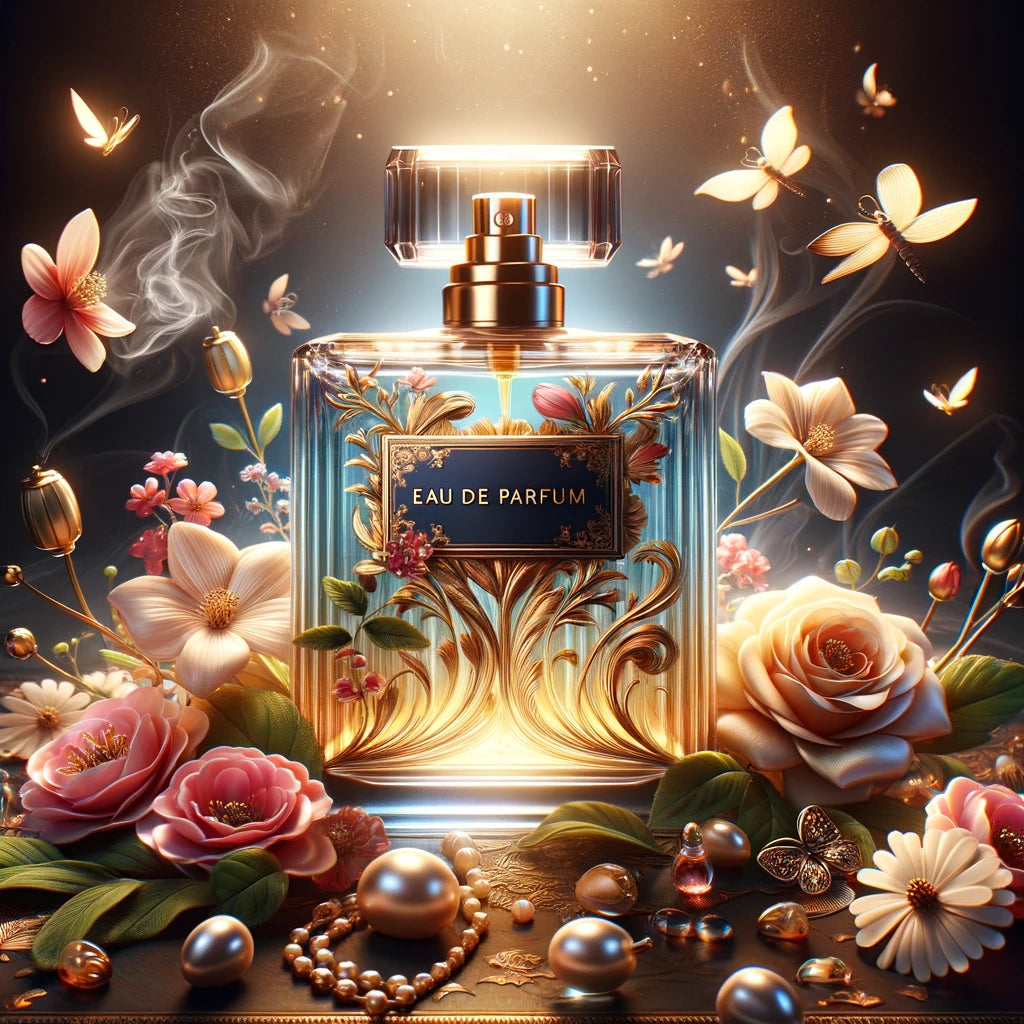
Eau de Parfum
Eau de Parfum is a type of perfume with a higher concentration of fragrances than both Eau de Cologne and Eau de Toilette. The concentration of fragrances in Eau de Parfum typically ranges between 15% and 20%. This means that in a bottle of Eau de Parfum, 15% to 20% of the content consists of perfume oils, while the remainder is a mixture of alcohol and water.
This relatively high concentration ensures that Eau de Parfum has a rich, deep fragrance that lingers longer on the skin. The scent of Eau de Parfum can often last for hours, usually between 4 and 8 hours, depending on the specific composition and the wearer's skin type. Due to the strength and longevity of the fragrance, Eau de Parfum is usually applied in smaller quantities than lighter perfume types.
This type of perfume is appreciated for its complexity and depth in fragrance profile. Although it may be more expensive than Eau de Toilette or Eau de Cologne, many people choose Eau de Parfum for its long-lasting nature and the quality of the fragrance.
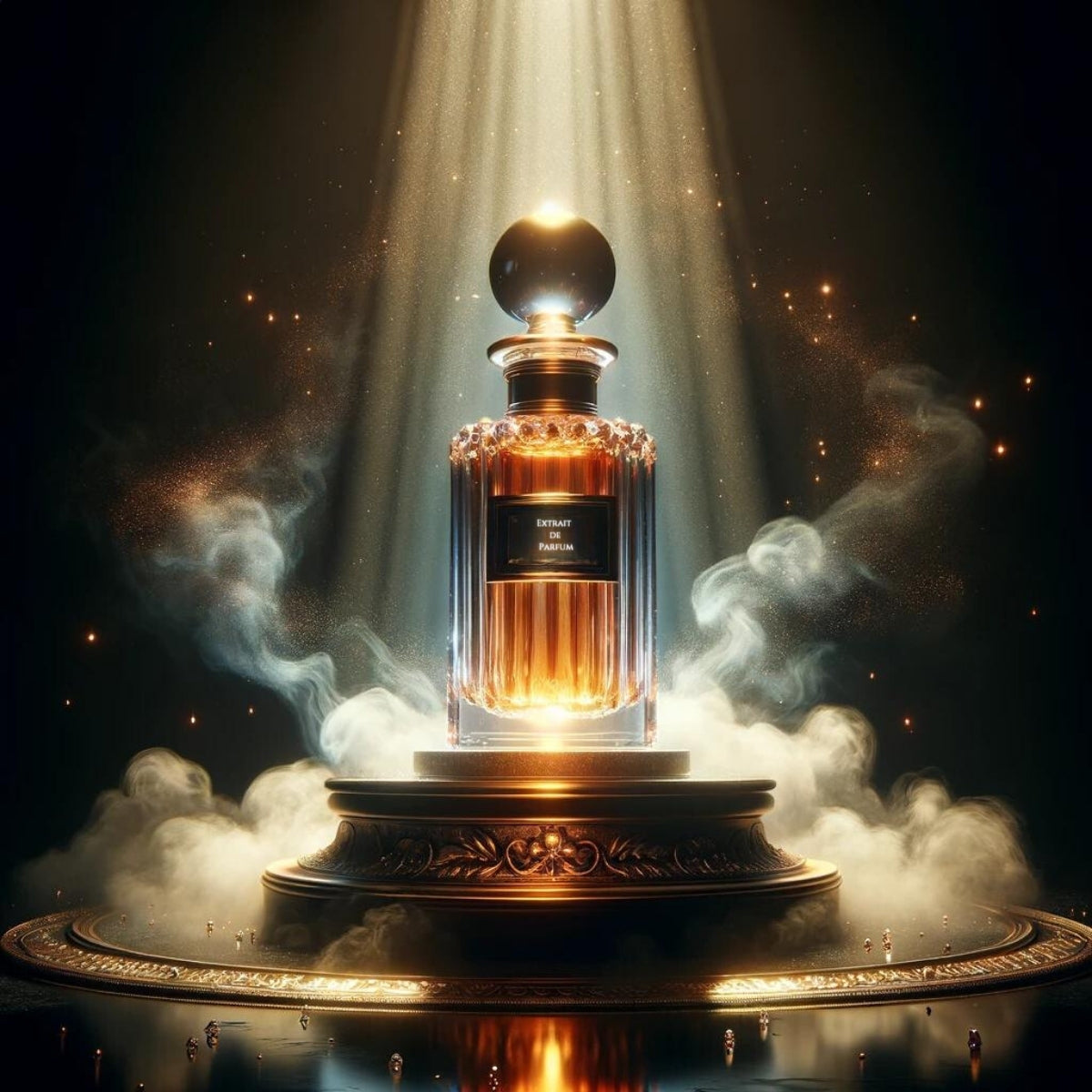
Extrait de Parfum
Extrait de Parfum, also known as pure perfume or perfume extract, is the most concentrated type of perfume available. It has the highest concentration of fragrances of all perfumes, usually ranging from 20% to 40% or even more. This means that in a bottle of Extrait de Parfum, the majority of the content consists of pure perfume oils, with only a small amount of alcohol and sometimes no water.
This extremely high concentration ensures that Extrait de Parfum has an exceptionally rich, deep, and long-lasting fragrance. The scent can easily last throughout the day and sometimes even until the next day on the skin. Only a small amount of Extrait de Parfum is needed to create a powerful and long-lasting fragrance experience.
Due to the high concentration of fragrances, it is generally more expensive than other types of perfume, but it is known for its exceptional quality and refinement.
People choose Extrait de Parfum when they are seeking a fragrance experience of the highest quality and profound complexity. It is often the choice of perfume enthusiasts looking for a distinctive and enduring olfactory impression.
To the extent that
In the enchanting world of perfume, beauty comes from the harmony of scents, the magic of memories and the art of self-expression. As we conclude this fragrant journey through the history, creation and selection process of perfumes, we want to encourage you to embrace your own olfactory adventure. Discover the scents that resonate with your soul, create lasting memories and let your perfume tell your story, no matter where your journey takes you. In the world of perfume there is no limit to the refinement of your senses and the depth of your personal expression. So, dare to explore, experiment and enjoy the unparalleled power of perfume, because it is an art that is always evolving, just like you.
